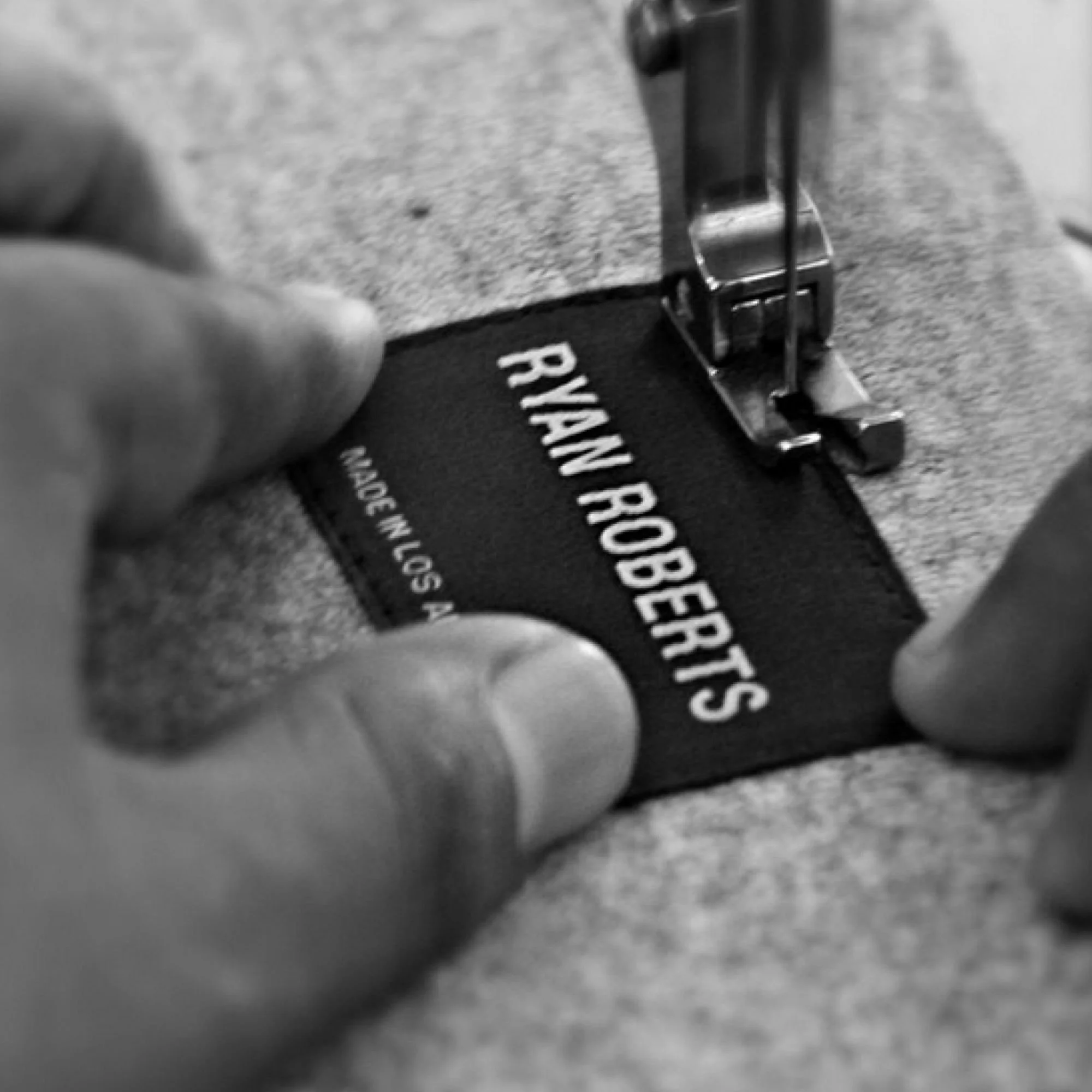The Ryan Roberts Label - The Quiet Perfection That Defined a Los Angeles Silhouette
In the early 2000s, when American fashion was split between the gloss of New York runways and the raw denim boom out West, a quieter revolution was happening inside a pattern room in Downtown Los Angeles. The label was Ryan Roberts – Made in Los Angeles, and it became one of the most respected — if understated — American lines of its era. Long before the rise of “quiet luxury,” Ryan Roberts was quietly perfecting it.
The brand’s lifespan, from 2001 to 2016, tells the story of a designer who never chased flash or trend cycles. Instead, Roberts built a body of work that rested on three pillars: fit, fabrication, and restraint. His clothes carried a kind of American clarity—pieces that looked simple at first glance but were engineered with the precision of someone who understood garments from the inside out.
Before the label: training in the discipline of New York–level polish
Roberts’ eye was trained in Toronto at Lida Baday, one of the most technically rigorous womenswear houses of the 90s. As a Senior Design Associate, he cut first patterns, fit samples, corrected silhouettes, and helped produce six collections a year — many destined for the floors of Bergdorf Goodman, Saks Fifth Avenue, and Nordstrom.
It was a crash course in precision. And it showed.
The Los Angeles years: a line built from the ground up
When Roberts founded his namesake label Ryan Roberts in 2001, Los Angeles was still considered an outlier in the American fashion map. But his work — luxury knitwear and outerwear designed and manufactured entirely in DTLA — played a quiet role in shifting that perception.
His pieces were stocked by retailers known for their curatorial exactness:
Fred Segal, Los Angeles
Takashimaya, New York
Stanley Korshak, Dallas
Wilkes Bashford, San Francisco
Nicolas, Toronto
Valerie Simon, Montreal
These stores didn’t take risks on brands without a point of view. Roberts’ work made the cut because it was grounded in technique: pattern cutting, draping, tailoring, and an unwavering commitment to luxurious fabrications sourced from Japan, Italy, and across the U.S.
The brand fit into the lineage of early-2000s American designers who favored craftsmanship over theatrics — designers focused on longevity rather than runway noise. Roberts’ collections often lived in the same boutiques as Rick Owens’ early LA pieces, James Perse’s refined basics, and the rising wave of West Coast designers who understood that everyday clothing could be a kind of luxury.
A designer-as-founder era
Running Ryan Roberts Design Inc. meant Roberts wasn’t only designing collections; he was running a full fashion house. This wasn’t unusual for independent American designers of the era, but Roberts approached it with an obsessive technical consistency that shaped the DNA of the brand: timeless silhouettes, meticulous construction, and elevated staples that felt neither East Coast severe nor West Coast casual. They lived in the sweet spot between.
Engle Roberts and the rise of technical luxury
After closing his namesake label in 2016, Roberts co-founded Engle Roberts, a womenswear line designed for a new type of American professional — mobile, connected, and unwilling to sacrifice comfort for polish.
The collection used technical Japanese and Italian fabrics — luxurious yet engineered. It was an early precursor to the “performance luxury” movement that would later gain traction. Roberts, as Creative Director, handled concept strategy, pattern making, garment construction, and the full design cycle.
Where his first label refined the idea of elevated basics, Engle Roberts expanded the idea of modern American dressing — practical but intelligent, understated but elegant, shaped by movement and real life.
Today: legacy in the hands of a stylist
Roberts now works as a freelance designer and personal stylist, and it is here — perhaps unexpectedly — that the legacy of his clothing line lives most clearly. His understanding of fit, proportion, and construction is visible in how he builds wardrobes for clients.
He approaches personal style as if he’s building a collection:
identifying foundations
defining silhouette vocabulary
refining proportion
curating hero pieces
balancing novelty with wearability
Many stylists assemble looks. Roberts architects them.
The place of the Ryan Roberts label in American fashion
The Ryan Roberts label is a snapshot of a specific moment in American fashion — a period when Los Angeles was emerging as a legitimate design city, when independent brands were the lifeblood of specialty boutiques, and when craftsmanship was beginning to reassert itself in a market distracted by fast fashion.
What makes Roberts’ story unique is that his work didn’t chase fashion history; it simply became part of it. His collections, quietly carried by some of the most iconic retailers in North America, embodied a West Coast point of view that still resonates today: clothes made for real bodies, real lives, and real movement — executed with technical rigor.
In an industry often defined by spectacle, Ryan Roberts built a legacy on something more enduring.
Silence, skill, and the subtle power of a perfect fit.






